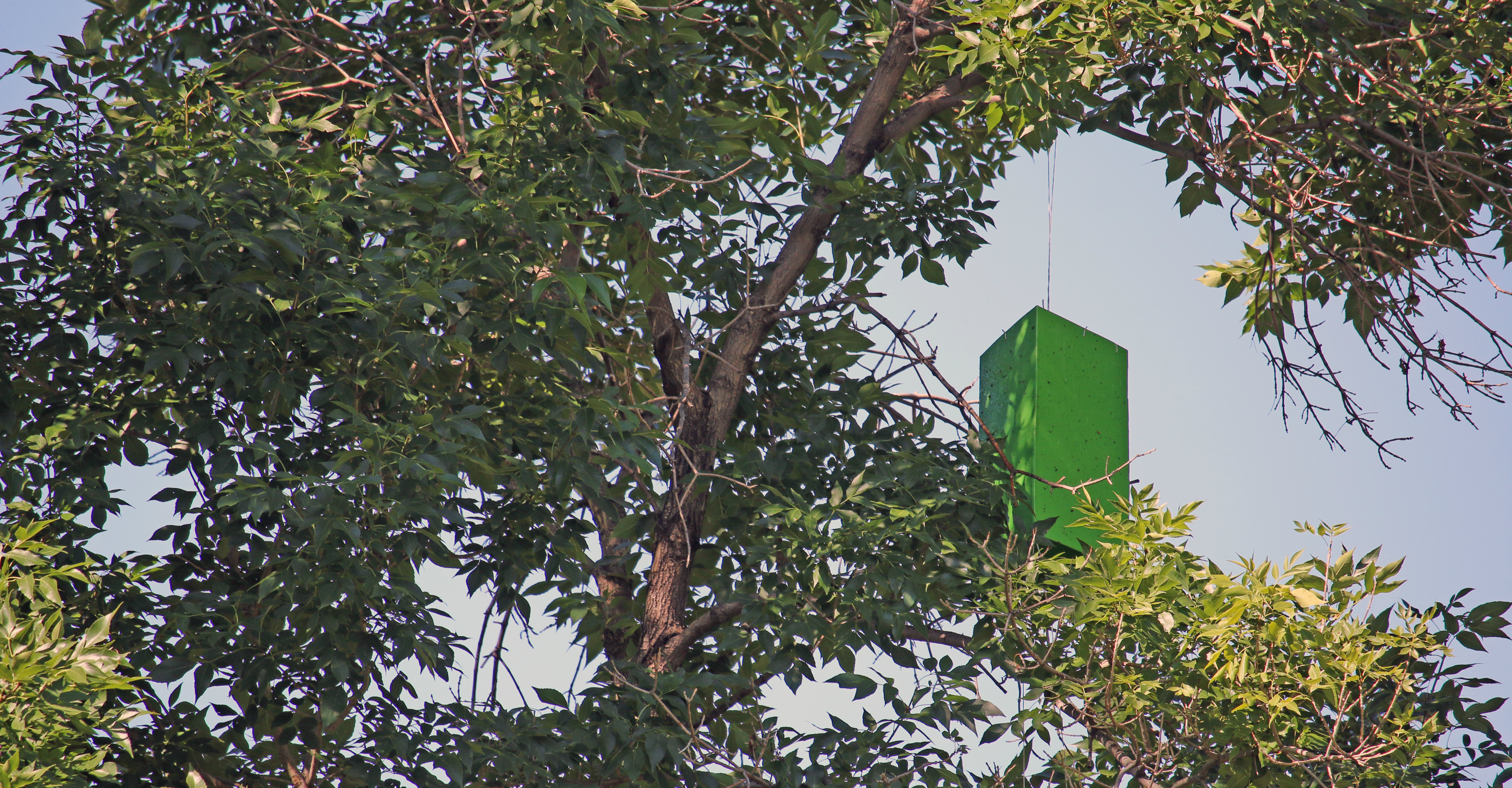In mid-June, the City of Denver confirmed the presence of the emerald ash borer (EAB)…

Traps set to determine if & when emerald ash borer reaches Denver
DENVER — If you’re wandering through one of Denver’s public parks this summer and find yourself looking up to admire one of the city’s historic ash trees, you might notice a green or purple object hanging from it.
So what the heck are these things?
They’re known as sticky traps, and the Denver Parks and Recreation’s Office of the City Forester has deployed them in strategic parts of the city in an effort to determine whether the emerald ash borer (EAB) has arrived in the Metro area.
EAB is an invasive pest that has devoured tens of millions of ash trees in more than 30 states and parts of Canada. Though it’s yet to reach the Mile High City, EAB poses a direct threat to an estimated 1.45 million ash trees in the Metro area, including 330,000 in the City and County of Denver.
In fact, 1 in 6 Denver trees is an ash. And each one that isn’t treated or replaced in the coming weeks, months and years will likely succumb to EAB if and when it shows up. That’s why these traps are so crucial, said Sara Davis, program manager with Denver’s Office of the City Forester.
But to be clear, they aren’t meant as a deterrent to fight the spread of EAB.
“The traps are meant to act as monitoring units,” Davis said.
In other words, they aren’t the proactive sort of traps that you might see in the Midwest to capture the Japanese Beetle. They will simply tell the Office of the City Forester if EAB has arrived on our doorstep. And make no mistake, Davis said, it’s just a matter of time before the pest says hello.
“We fully expect EAB to arrive in Denver, so we’re doing everything we can to prepare ourselves ahead of time,” Davis said.
So how do the traps work?
Unlike some pest traps, they’re not pheromone-based. Instead, these traps are sight-based. Though the research is far from conclusive, Davis said, studies have shown EAB appears to be visually attracted to the colors purple and green. If the insects are drawn to the trap, they’re likely to get caught in the sticky surface coating.
The Office of the City Forester will monitor the traps through August, at which point the primary migration period for EAB tends to taper off.
